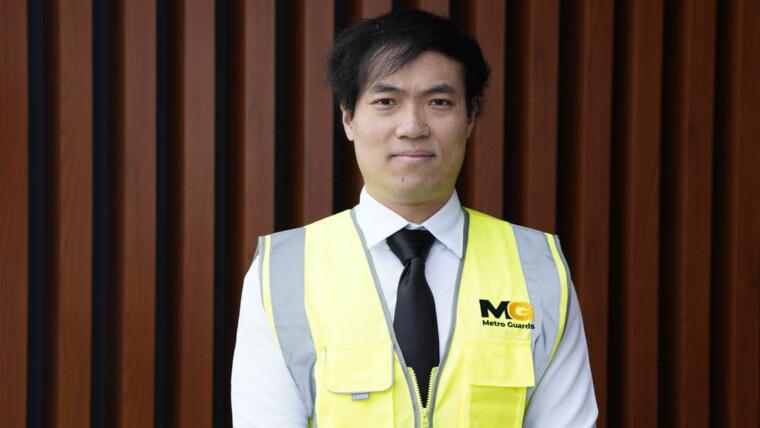In today’s rapidly growing world, crowd control security has become an essential aspect of maintaining order and safety in various events and public spaces. Whether it’s a music festival, a sports event, a protest, or a shopping mall during the holiday season, managing large crowds requires meticulous planning, efficient strategies, and the use of modern technology. In this comprehensive guide, we will delve into the intricacies of crowd control security, exploring the challenges it presents and the strategies that can be employed to ensure a safe and smooth experience for everyone involved.
Introduction to Crowd Control Security
Crowd control security involves strategies and measures aimed at managing large groups of people in public spaces to prevent chaos, maintain order, and ensure the safety of both attendees and the general public. From sporting events to concerts to protests, effective crowd management is critical for preventing accidents, stampedes, and potentially dangerous situations.
The Importance of Effective Crowd Management
The significance of crowd control security cannot be overstated. Inadequate crowd management can lead to injuries, property damage, and even loss of life. By implementing proper crowd control measures, event organizers and authorities can create an environment where attendees can enjoy themselves without worrying about their safety.
Understanding Crowd Behavior
To effectively control a crowd, it’s essential to understand how crowds behave. Crowds can exhibit a wide range of emotions and behaviors, from excitement and enthusiasm to frustration and aggression. By analyzing crowd dynamics, security personnel can anticipate potential issues and take proactive measures.
Types of Crowd Control Measures
Physical Barriers and Fencing
Creating physical barriers using barricades, fencing, and stanchions helps direct crowd flow and prevent unauthorized access to restricted areas.
Access Control Points
Strategically placed access control points with ticket checks and bag inspections ensure that only authorized individuals enter the venue.
Security Personnel Deployment
Well-trained security personnel can deter unruly behavior, diffuse conflicts, and provide assistance in emergencies.
Surveillance and Monitoring Systems
Utilizing surveillance cameras and monitoring systems allows real-time tracking of crowd movement and identification of potential security threats.
Preparing for Crowded Events: A Step-by-Step Guide
Risk Assessment and Planning
Conducting a thorough risk assessment helps identify potential hazards and develop appropriate mitigation strategies.
Communication Strategies
Clear communication through signage, announcements, and digital platforms keeps attendees informed about rules, schedules, and emergency procedures.
Crowd Flow Management
Efficient crowd flow management prevents congestion and ensures that people can move comfortably throughout the venue.
Medical and Emergency Preparedness
Having medical teams and emergency response plans in place is crucial for addressing medical issues and unforeseen emergencies.
Technological Innovations in Crowd Control
Crowd Analytics and Prediction
Advanced analytics tools can predict crowd behavior patterns, aiding in proactive security measures.
Biometric Identification
Biometric systems like facial recognition enhance security by identifying individuals in real-time.
Drones for Surveillance
Drones provide aerial surveillance, helping security teams monitor large areas effectively.
Case Studies: Successful Crowd Control Examples
The Olympics Games
The Olympics implement a comprehensive crowd management plan involving security forces, technology, and meticulous planning.
Music Festivals
Music festivals often employ wristbands with RFID technology for access control and cashless transactions.
Political Rallies
Political rallies require a delicate balance between freedom of speech and security, often involving crowd segmentation and designated protest zones.
Ensuring Crowd Control Legitimacy and Ethics
Respecting Civil Rights
Crowd control measures should respect individuals’ civil rights and avoid unnecessary use of force.
Minimizing Use of Force
Security personnel should prioritize de-escalation tactics and use force only as a last resort.
Transparency and Accountability
Maintaining transparency about crowd control strategies and outcomes fosters trust between organizers and attendees.
The Future of Crowd Control Security
With the advancement of technology, crowd control will likely incorporate more AI-driven analytics, enhanced biometrics, and improved communication systems.
Conclusion
In a world where large gatherings are a common occurrence, crowd control security remains a paramount concern. By understanding crowd behavior, utilizing appropriate measures, and embracing technological advancements, event organizers and authorities can create an environment where safety and enjoyment coexist.
FAQs
What is crowd control security?
Crowd control security involves strategies to manage and maintain order in large public gatherings, ensuring the safety of attendees.
Why is crowd control important?
Inadequate crowd control can lead to accidents and chaos. Effective management ensures safety and a pleasant experience.
What are some common crowd control measures?
Physical barriers, security personnel, surveillance systems, and access control points are common measures.
How does technology contribute to crowd control?
Technology offers tools like crowd prediction analytics, biometric identification, and drones for better management.
What does the future hold for crowd control security?
The future involves more advanced technology integration and a focus on respecting civil rights while maintaining security.

